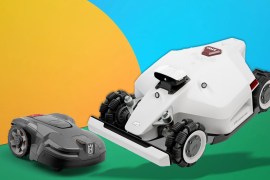LG G6 vs Samsung Galaxy S7: the weigh-in
Can LG's fresh-start flagship dethrone the top-tier champ?
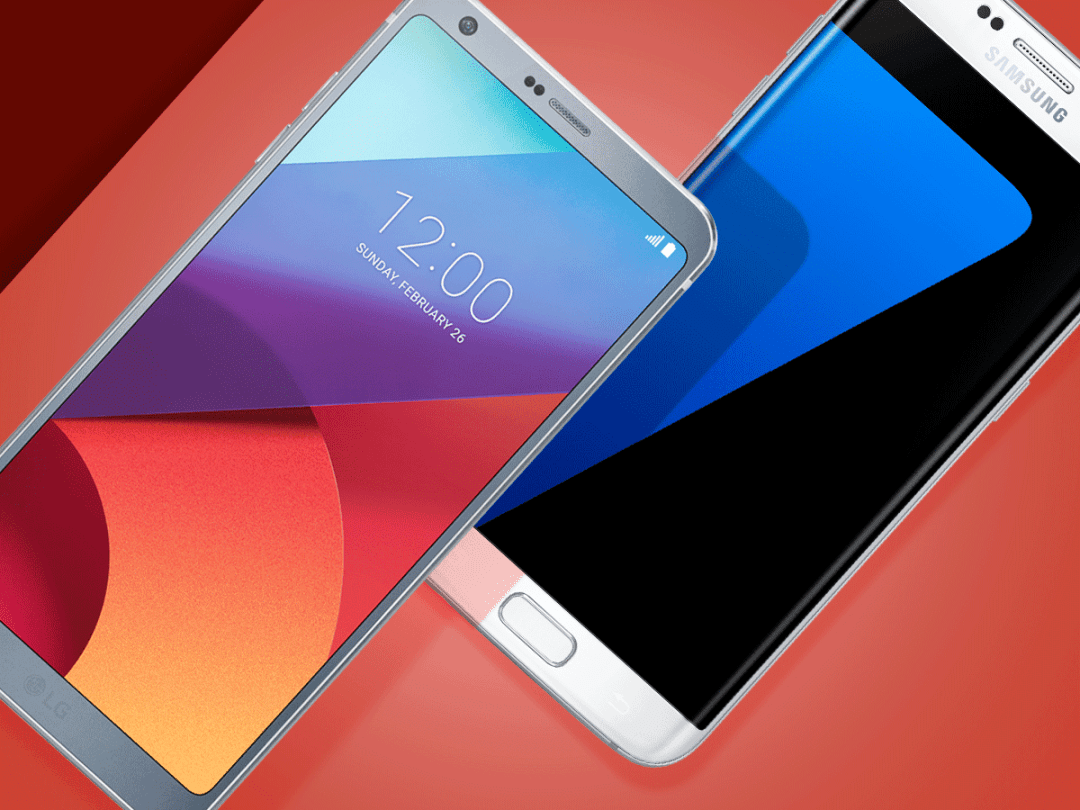
While the OnePlus 3T currently leads our list of the top smartphones out today, it’s propelled in large part by value. When it comes to the best phone regardless of price, the Samsung Galaxy S7 still gets our vote.
It’s just an amazing handset, from the stunning display to the amazing camera, sleek design, waterproofing, battery life, VR support, and other perks. And the curvy Galaxy S7 Edge is essentially just as strong a pick. But the Galaxy S7 is about a year old, and the Galaxy S8 may still be a couple months out.
And here comes the LG G6 waltzing in as a new heavyweight contender. Bouncing back from last year’s semi-misfire of the modular G5, the LG G6 has top-of-the-line everything and looks like LG’s best effort in years.
After a couple rounds of Samsung dominance, can LG take the throne? Here’s a look at how the LG G6 stacks up to the Galaxy S7 and S7 Edge in terms of specs and abilities.
Design: Both are beautiful
The Samsung Galaxy S7 and S7 Edge have “flagship” written all over them, as the high-gloss, glass-heavy designs are packed with polish and precision. True, they’re both just refined versions of the Galaxy S6 builds, but the extra curves are noticeable, and the addition of water resistance was significant indeed.
Without waterproofing and feeling a little less durable thanks to the removable bottom, the LG G5 couldn’t stand tall next to the Galaxy S7. But the LG G6 has a much better shot. It’s all glass and metal in this premium build, it’s now IP68-rated water and dust resistant, and the front really wowed us in person.
The 5.7in display, which uses atypical 18:9 dimensions, takes up more than 85% of the phone’s face, which means there’s very little bezel surrounding what you’re staring at. It’s a beauty.
The little curved edges of the screen are a nice touch, as well, giving the G6 a nice bit of personality. Truly, both companies’ top-tier handsets look like winners to us.
Screen: Dazzling duo
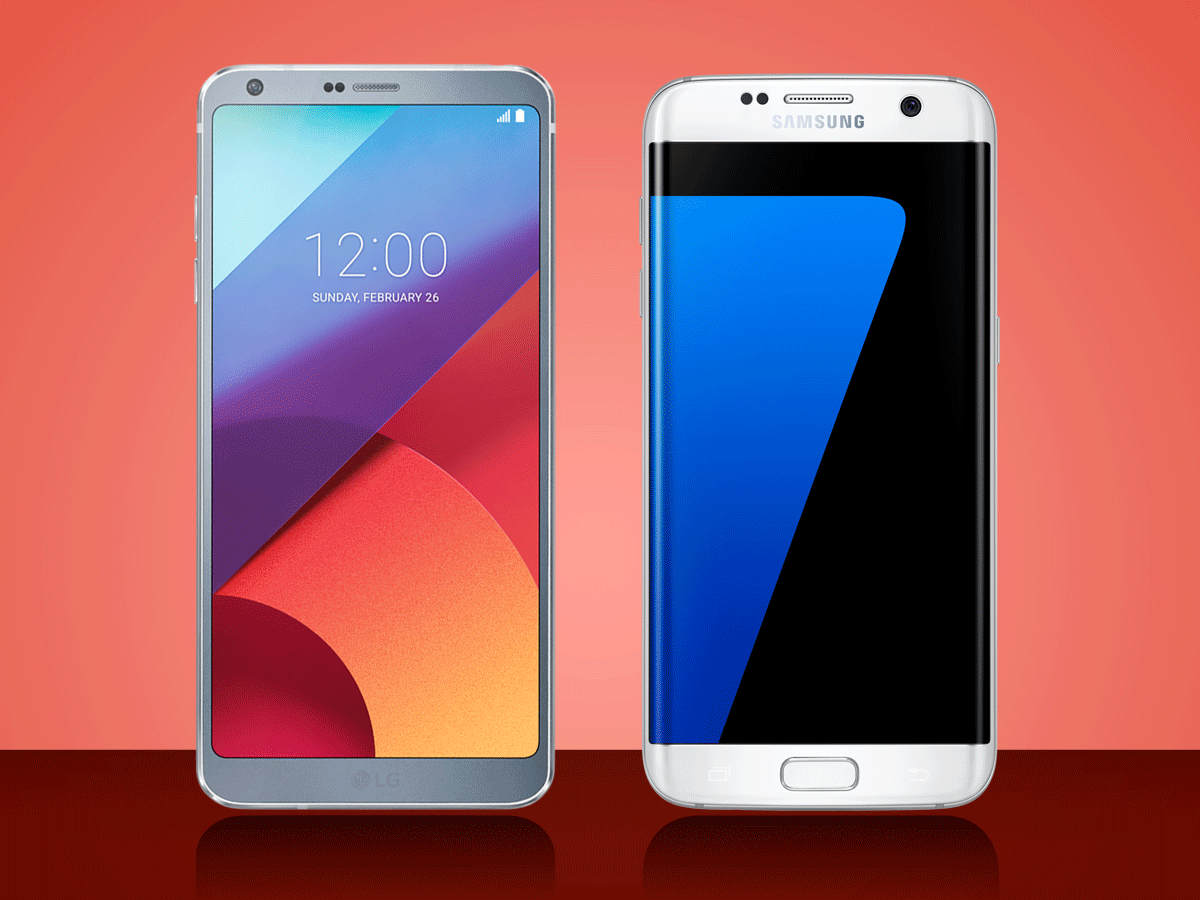
No smartphone screens have been better than those on Samsung’s flagships the last couple years, and the Quad HD Super AMOLED options on the Galaxy S7 devices are absolutely spectacular to see. Whether you go with 5.1in flat on the S7 or the slightly larger 5.5in curved screen on the S7 Edge, it’s hard to lose with these deep blacks and gorgeous colours.
And yet the LG G6 could be the phone to top it. True, the screen is larger at 5.7in, but the phone is surprisingly narrow for those dimensions. That’s helped by the extra-tall 18:9 display, as opposed to the usual 16:9 widescreen dismensions, although LG has special modes available to display apps, games, and media in full-screen without obvious stretching.
LG opted for an IPS display for this Quad HD screen, but even though it’s LCD as opposed to the increasingly popular OLED, there is one big benefit: HDR. Yes, the G6 offers HDR support, both for Dolby Vision and HDR10. You’ll be able to stream Netflix with the benefit of a much wider colour gamut, for example, which could elevate this screen to the top of the class.
We’ll have to wait until we can spend more time with the LG G6 and watch them side by side, but Samsung could be on the losing end of this comparison… at least until the Galaxy S8 is revealed later this spring.
Also Read › LG G6 hands-on review
Power: Pretty close
Here’s one area in which we don’t expect to see much variance between the phones, despite a year’s difference between them. The Galaxy S7 and Galaxy S7 Edge both rock Samsung’s own Exynos 8890 system-on-a-chip (and 4GB RAM), which was the most powerful chip around until Apple’s A10 Fusion in the iPhone 7 arrived.
The Exynos was also shown to be a little faster than the Qualcomm Snapdragon 820, which featured in the LG G5 and also some international variants of the Galaxy S7. Meanwhile, the LG G6 will use the Snapdragon 821, which is about 10% faster than the 820, and also comes with 4GB RAM.
All told? Both are super fast, but we doubt there will be any hugely discernable gap between them. We might see more of a difference in terms of UI, as the LG G6 launches with Android 7.0 Nougat and seems to have minimal manufacturer skinning. Samsung’s Android skin is a bit thicker (albeit better than in the past), so it’s possible that the G6’s interface will be a bit swifter. We don’t know for sure yet, though.
Also Read › Samsung Galaxy S7 review
Camera: Sharpest shooters
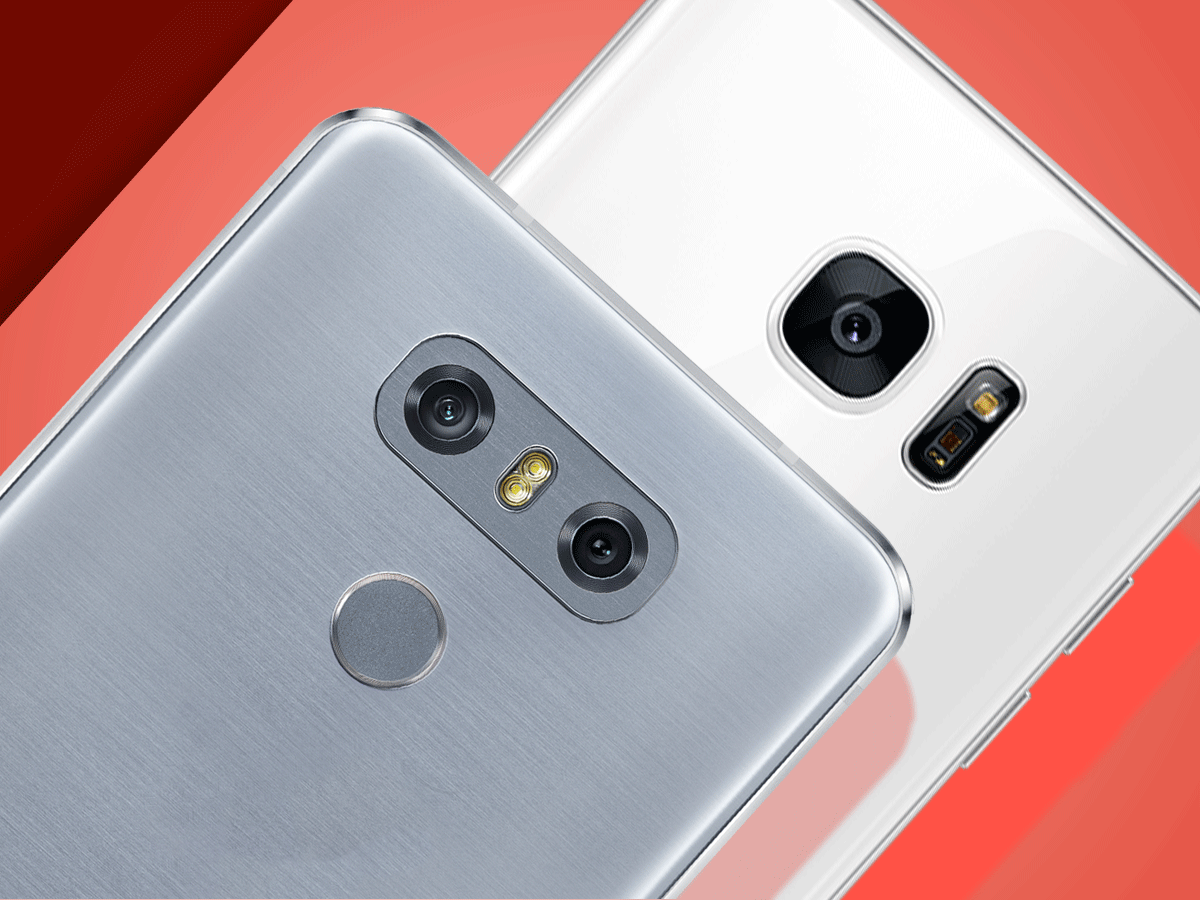
It’s hard to find anything significant to complain about with the Galaxy S7’s back camera. It’s certainly one of the best smartphone shooters on the market today, and last summer, our dear readers picked it as the best of the bunch against other top handsets.
Although it stepped down to 12 megapixels from 16MP on the Galaxy S6, the S7 and S7 Edge’s camera has larger pixels to capture more light plus a wider f/1.7 aperture, all of which means better low-light results as well. All told, the Galaxy S7 holds up impressively well in nearly all shooting scenarios.
Honestly, the LG G5 wasn’t too far behind, and its dual camera back array – offering multiple field of vision options – was a shining feature of the handset. And the LG G6 will do it one better by leveling the playing field between the two back cameras, giving both the 71° and 125° cameras 13 megapixels to work with.
Add in a swap to phase detection autofocus, and the G6 ought to be one of the top phone cameras available this spring. Will it best the Galaxy S7? We can’t wait to find out… by annoying all of our loved ones with constant snapshots.
Perks: Get in Gear
Both the Samsung Galaxy S7 and LG G6 can claim a couple of now-expected flagship features: IP68 water resistance (as mentioned before) and microSD support. Good. All settled there. Both also have fingerprint sensors, with Samsung’s on the front bottom and LG’s on the back.
Beyond that? Well, the Galaxy S7 has impressed us with its battery life using a 3,000mAh cell on the standard model and 3,600mAh cell with the larger S7 Edge. The LG G6 falls right in the middle with a 3,300mAh battery pack, but has a larger screen than both Galaxy options. So we’ll have to see how that shakes out in terms of longevity. Both offer fast charging, thankfully.
The Galaxy S7 and S7 Edge do have one other very big perk in Samsung Gear VR support, and the headset shell is well worth the £60-70 you’ll pay for it today. It’s unclear whether the LG G6 will have any sort of VR support, but given how poor the LG 360 VR headset for the G5 was, we’re not all that enthused about the possibilities.
Overall: G6 or S7
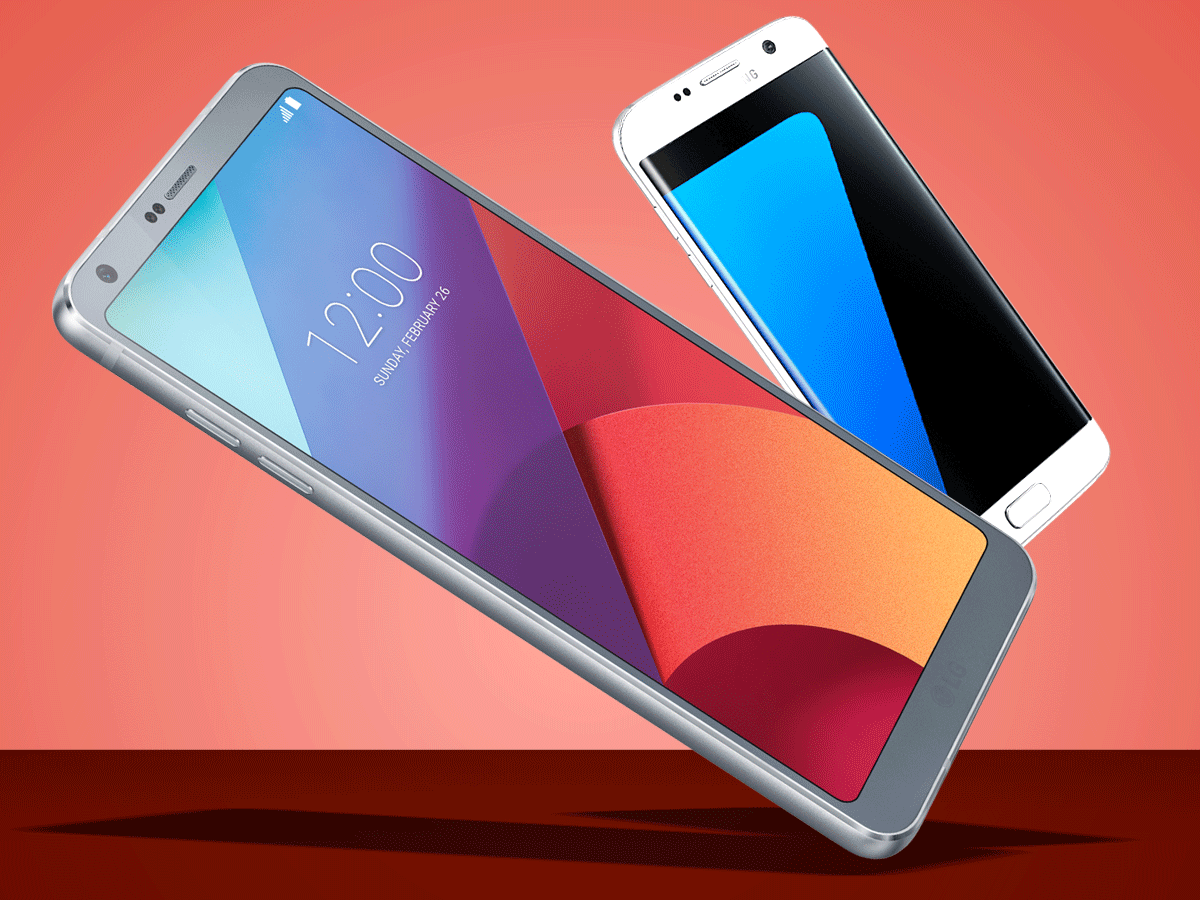
As far as the highest of the high-end phones go, Samsung has been pretty much untouchable the last couple years. That might end up being true again with the Galaxy S8, but we haven’t seen or touched it, and we just don’t know.
But we have seen and touched the LG G6, and it’s clear that this is the company’s best effort in a long while. Despite the odd screen aspect ratio, it’s light on gimmicks and surprises, instead laser-focused on bring a really great and well-rounded Android flagship. Well, at least from our time with it so far.
Will it be enough to top the Galaxy S7 and S7 Edge? We think it has a chance, and we’ll find out for sure very soon once we put the LG G6 through our review gauntlet. Stay tuned for that.
Also Read › Samsung Galaxy S7 Edge review


